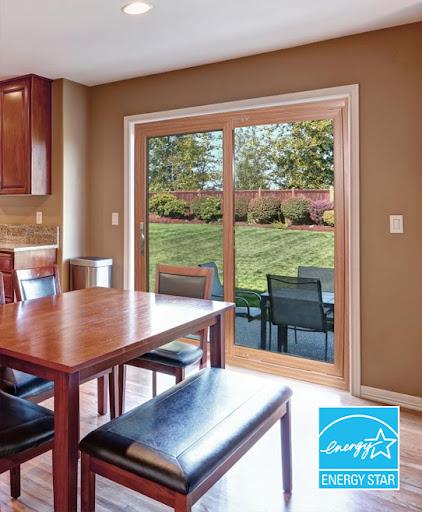The Energy Star label is not just any symbol — it communicates that a product adheres to certain guidelines and is highly committed to both quality and efficiency. But why does this matter for window and door installations?
Administered by the U.S. Environmental Protection Agency (EPA), this esteemed label is one of the most widely known in the industry, recognized by roughly 90% of households in the nation. Windows and doors that qualify for the label greatly contribute to a building's overall energy efficiency, saving you money while reducing CO2 emissions produced by your home.
Recently, the EPA's Energy Star program has released updated specifications for qualifying products in Version 7.0. The revisions aim to institute higher standards for performance, with a new label — Energy Star Most Efficient — for products leading the way in energy innovation.
What is Energy Star Most Efficient?
Energy Star Most Efficient is a new label created to distinguish highly efficient products that showcase technological innovation. Among the qualifying categories of products are:
- Vertical slider windows (single or double hung)
- Horizontal slider windows
- Casement-style windows (awning, projected, etc.)
- Fixed or picture windows
- Sliding glass doors
- Skylights
Here at Hodges, we believe our customers deserve nothing less than the very best. That's why we've partnered with choice suppliers to bring you products that exceed the Energy Star Most Efficient criteria, including Ideal Window, Jeld-Wen, Marvin, ProVia, and Sunrise Windows.
Energy Star Version 7.0
Energy Star's newest regulation guide — Version 7.0 — will be effective on October 23rd this year. To be eligible for the Energy Star Most Efficient label, all residential windows and doors must meet the required specifications outlined in the Partner Commitments guide (in effect on the date of product manufacture).
Note that these revisions are fully dynamic and susceptible to change. Factors such as technology disruptions, market changes, environmental impact, and product versatility greatly impact Energy Star's regulations.
Energy Star Requirements for Windows & Doors
Eligible windows and doors must meet several requirements to be considered for a label, especially regarding the Energy Star Most Efficient signifier. All products will be certified by the National Fenestration Rating Council (NFRC), an organization responsible for rating and comparing the energy efficiency of window and door models. The NFRC utilizes certain metrics to determine both the eligibility of a product as well as its performance.
Energy Efficiency
Of course, one of the most important metrics established by Energy Star is the energy efficiency of a window or door. Products will be evaluated for their U-factor (heat transfer per time per area and degree of temperature) and their Solar Heat Gain Coefficient (also called SHGC, the ratio of solar heat gain entering a space).
Window ratings are determined, in part, by association with a specific climate zone, including:
- Northern climate: U-factor at ≤ 0.22 and SHCG at ≥ 0.17
- North-Central climate: U-factor at ≤ 0.25 and SHCG at ≤ 0.40
- South-Central climate: U-factor at ≤ 0.28 and SHCG at ≤ 0.23
- Southern climate: U-factor at ≤ 0.32 and SHCG at ≤ 0.23
Door specifications take into account the U-factor, SHCG, and the specific glazing level of the model (the amount of glass used in the product), including:
- Opaque models: U-factor at ≤ 0.17 and no SHGC rating
- ≤ ½-Lite (less glass) models: U-factor and SHGC at ≤ 0.23
- > ½-Lite (more glass) models: Northern or North-Central climates at U-factor ≤ 0.26 and SHGC ≤ 0.40 / South-Central or Southern climate at U-factor ≤ 0.28 and ≤ 0.23
Energy Performance
Energy performance is only applicable to windows in the Northern climate, and it excludes all doors and skylights eligible for certification. Specifications consist of:
- U-factor equal to 0.23, SHCG at ≥ 0.35
- U-factor equal to 0.24, SHCG at ≥ 0.35
- U-factor equal to 0.25, SHCG at ≥ 0.40
- U-factor equal to 0.26, SHCG at ≥ 0.40
Air Leakage
Air leakage is defined as the volume of air flowing per unit time per unit area. This airflow is either due to natural air pressure or differences in temperature between indoor and outdoor areas.
All windows and sliding doors are required to have a rating of ≤ 0.3 cfm/ft2 while swinging door models are required to have a rating of ≤ 0.5 cfm/ft2.
Elevate your Energy with Hodges!
Maximize your energy efficiency with our line of Energy Star-certified models! Contact us today to request a free quote!



